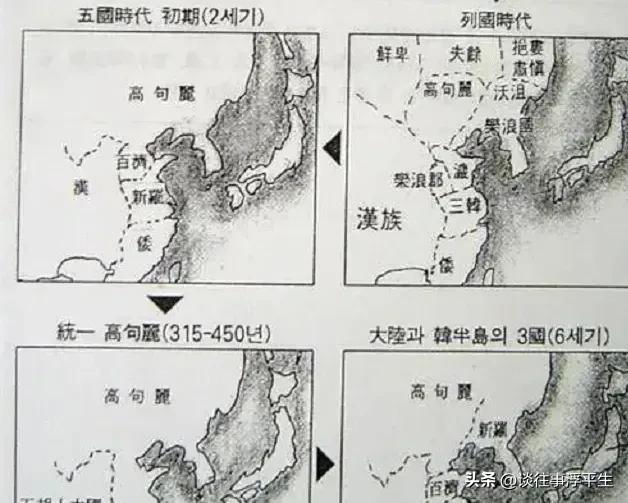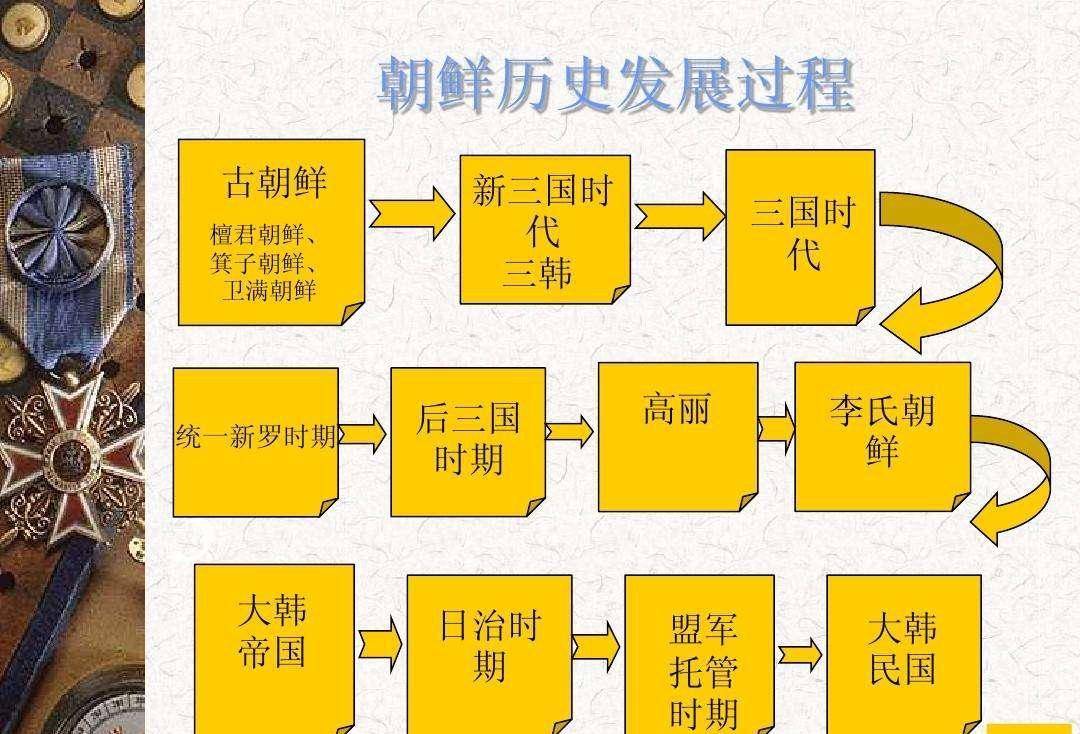1,1 Korean belongs toWhere were the ancestors of Koreans from?The ethnic group is the Korean ethnic group, which was originally a minority group in the north of our country. 2 In the blood composition of the Korean ethnic group, there is a large number of Han Chinese blood, that is, Chinese blood, which largely constitutes the Korean ethnic group. 3 The Japanese also have a blood connection with the Chinese. Scientific research shows that about one-third of the Japanese blood comes from China. 4 Similarly, about one-third of the Korean blood comes from China. 5 In addition, About one-third of the blood of Japanese and Korean people respectively comes from Southeast Asia 6.
2. The ancestors of Koreans, Koreans, Japanese, Vietnam, and Thais were not all China, but diverse groups. Specifically, although the ancient Korean Peninsula and China were closely connected, for example, Koguryo once had a part of its territory located in today's China Jilin Province, the ethnic composition of modern Koreans and Koreans is influenced by multiple factors such as historical changes, immigration and integration. It cannot be simply believed thatWhere were the ancestors of Koreans from?Their ancestors were all China.
3. The ancestors of the Koreans originated from tribes on the ancient Korean Peninsula, mainly including the Three Koreans. Later, they developed into Silla and Silla. They received support from the Tang Dynasty and defeated Koguryo and Baekje. Later, the Silla people migrated and occupied the entire Korean Peninsula. The Silla Dynasty learned the Tang Dynasty's system and culture, and later divided into three countries: Baekje and Silla. Among them, Gaekuri and Baekje were not the previous Koguryo and Baekje, but the country established by the Silla people.
4. The origin is the ancestors of the South Korean tribe. The original origin is the South Korean tribe. The ancestral composition of the South Korean people can be said to be very complex. Generally speaking, the origin comes from the Han people of China, the northern minorities, and the local indigenous peoples of South Korea. So we can see the funny thing that the Koreans regard many China as their ancestors, and then develop into competing with their own suzerain. The original origin of the South Korean people is the earliest source of the South Korean tribe.
5.1 The ancestors of the Koreans were not directly China, but shared the same historical origin as the ancient residents of China. 2 The residents in the northern part of the Korean Peninsula were mainly Koreans. They were part of the descendants of China during the Shang Dynasty. 3 The Battle of Muye marked the end of the Shang Dynasty. King Wu of Zhou defeated King Zhou of the Shang Dynasty, ending the nearly 500-year rule of the Shang Dynasty. 4 In order to continue the blood of the Shang Dynasty, King Zhou's uncle Jizi moved eastward to the Korean Peninsula and established Qizi.
6. The ancestors of South Korea were Chinese, because there was not one ethnic group on the Korean Peninsula, but two. One was in the north and the other in the south. Both of them lived peacefully in their own territory. They did not disturb Koguryo in the north but were real Chinese. Most of the people living here were Chinese. They established the feudal dynasty with their own hands, but it was later destroyed. The Chinese also returned to China and later, the three Korean tribes in the south were established.
7. The ancestors of the Koreans were not China at all. They were the Mongolian people who settled on the Korean Peninsula, especially in the south, during the Paleolithic Era. At that time, China was called "Sou" in the north and "Han" in the south. Later, the Western Zhou Dynasty destroyed the Shang Dynasty and Jizi moved to Liaodong. Some Central Plains people arrived in Liaodong and northern Korea to combine with the Sou people. Please note that there was no such concept as Chinese people at this time. The Han people also migrated to the Sou people and Shang people more than 800 years later in the Han Dynasty.
8. There is no final conclusion on the origin of Korean ancestors. There are many views from a paper published by the International Society for the Human Genome Research in Southeast Asia in 2009, which believes that Korean ancestors migrated from Southeast Asia to southern China and Cambodia, then quickly north, and finally arrived on the Korean Peninsula and settled in China. Many data show that the ancestors of most Koreans originated from one of China, including the ancient Korean clans and the Chen family, who fled or were captured by the ancient royal family of my country.
9. 1 Not all of the ancestors of the Koreans immigrated from China. The history of the Koreans can be traced back to the three Korean tribes in the southern part of the peninsula, and later developed into countries such as Silla and Baekje. 2. Koguryo was an independent nation and country in ancient times. Different from the southern ethnic groups of the Korean Peninsula, Koguryo did have close ties with China in history, but the main ethnic group of Koguryo was not the Han, but the Koguryo. 3 The territory of the northern part of the Korean Peninsula has history.
10. South Korea's ancestors are not China According to modern human genetics, the ancestors of South Koreans are indeed not China. The mainstream genes of China are different from those of China. Most of their genes are O2D. In the analysis of ancient sites in our country, no such gene has been seen. The Altai gene among Koreans is less than 3%, indicating that they are not descendants of Altai. The topography of South Korea is located in the southern half of the Korean Peninsula in the northeastern part of the Asian continent.
11. Where are the ancestors of the Koreans? In ancient times, in the location of Chungcheong on the Korean Peninsula, there lived a group of tribes, collectively known as Sanhans, namely Ma Hanchen and Han Benhan. The Sanhans were the ancestors of the Koreans in Korea. Later, they established a country called Silla. During the Tang Dynasty, Koguryo, which came from northeastern China, had developed its power to the northern part of the Korean Peninsula. Silla was afraid that Koguryo would annex it, so he asked the Tang Dynasty for help and destroyed Koguryo's affiliated state Baekje. Later, Gao was eliminated.
12. 1 The ancestors of the Koreans and the ancestors of the Chinese are not the same ethnic group. The Koreans mainly belong to the Mongolian race or the Central Asian race, and are significantly different from the Chinese-Tibetan race in China. 2 Linguistic research shows that Japanese and Korean belong to the Altaic language family, which is completely different from the Chinese-Tibetan race in China. Koreans are closer to the Mongolian race in blood. 3 Part of the Japanese aborigines may have originated from the Korean Peninsula and may have migrated from there to Shandong.
13. The Koreans and the Koreans really owned the northern territory of the peninsula after the Khitan, that is, after the Koryo Kingdom was established by Wang Jian, they only occupied the northern territory of the peninsula. However, modern Koreans and Koreans only regard the Koguryo people as their ancestors. Why do other Shang Dynasty people, Yan State people, Qin Dynasty people, Han Dynasty people, Western Jin people, Tang Dynasty people, Bohai people, and Khitan people who owned the northern territory of the peninsula do not recognize their ancestors? Because the Koguryo people have disappeared among other ethnic groups, they say Koguryo.
14.1 Regarding the theory that residents of the Sanhan Peninsula migrated to the island of Japan, the actual situation is more complicated. In his book The Formation of the Japanese Nation, Japanese archaeologist Taiji Fujima proposed that the residents of the Japanese archipelago in the late Jomata Era, especially the Western Japanese, already had the conditions to absorb foreign culture and enrich their lives. 2 Archaeological discoveries showed that the farming techniques at that time, such as farming tools and irrigation techniques, were similar to China farming techniques, except for these techniques.
15. South Korea's Chosun Ilbo reported that Jin Xu, a professor at the Department of Biology at Dankook University in South Korea, recently put forward a new view, believing that the ancestors of South Koreans may have come from "farmers in the Central Plains of China." This view is based on genetic analysis. This is different from the previous popular statement that Korean ancestors came from Mongolia. Professor Jin Xu studied the mitochondrial DNA base sequences of 185 unrelated South Koreans and found that the sequences of 4 of them are the same.
16.1 South Korea has a long history. According to the myth of the country, its history can be traced back to thousands of years ago, when Koreans were said to have ruled the earth. 2 The ancestors of the Koreans were not Chinese, but the Nifuh people of Sakhalin Island. The Nifuh people are ancient Asians and thousands of islands. Although Sakhalin Island once belonged to China, the Nifuh people can also be regarded as a group of people who once lived on Chinese soil. Therefore, the ancestors of the Koreans can be traced back to the ancient Asians of China. 3 Korean people.




还没有评论,来说两句吧...